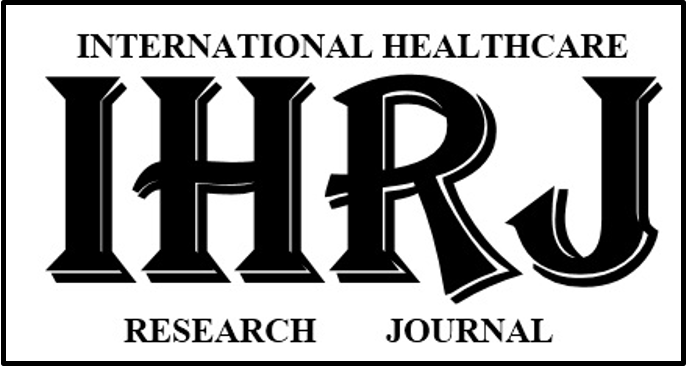The Prevalence Onychomycosis in North Western Region of Rajasthan
Abstract
NTRODUCTION: Onychomycosis is a fungal infection of nail caused by dermatophytes, yeast and mould. Onchomycosis infection continues to spread worldwide and found to persist everywhere. Onchomycosis infection prevalence is continuously increasing and the possible fungal pathogens are also increasing. All nail diseases are not fungal in origin hence laboratory investigations are needed to differentiate accurately between fungal infections and other conditions.
AIM: to find out mycological profile & morphological identification of fungal agent in onchomycosis infection and their prevalence in a part of Rajasthan.
MATERIALS AND METHOD: A total 50 samples of nail clipings were investigated in department of microbiology by using 20% KOH and culture tubes of Sabouraud’s Dextrose Agar (SDA) which were mixed with chloramphenicol and cycloheximide.
RESULT: A total of 50 samples (18 male and 32 females) were tested in period of one year (January to December 2016). Among them 28(56%) samples showed fungal growth, the predominat fungual pathogen in present study were Tricophyton spp. 12 (42.86%) followed by yeasts 09 (32.14%) then molds 07(25%). Fungi commonly presented in the middle age, between 31-40 years of age, due to trauma at the work site and in women, due to their wet work.
CONCLUSION: This study highlighted that Dermatophyte T.Rubrum as the main fungal pathogen which caused onychomycosis in the study region. As there are several fungi which cause the infection so it is necessary to perform culture for appropriate treatment So, it is imperative to diagnose it properly by using microbiological techniques and to treat it properly. For proper management of onychomycosis, diagnosis and accurate treatment play a key role in better outcome.
Downloads
References
Azulay RD, Azulay DR,Azulay-Abulafia L. Dermatologia. 5th ed. Rio de Janeiro:Guanabara Koogan;2008.
Peres NTA, Maranhao FCA, Rossi A, Martinez-Rossi NM. Dermatophytes: host-pathogen interaction and antifungal resistance .An Bras Dermatol.2010;85:657-67.
Singh S, Beena PM. Comparative study of different microscopic techniques and culture media for the isolation of dermatophytes. Indian J Med Microbiol 2003;21:21-4.
Madhuri JT. Onychomycosis: A significant medical problem.Indian J Dermatol Venerol Leprol. 2002;68:326-27.
Veer P, Patwardhan NS, Damle AS. Study of Onychomycosis: Prevailing fungi and pattern of infection. Indian J Med Microbiol 2007;25(1):53-6.
Chander J. Textbook of Medical Mycology, Third Edition, New Delhi, Mehta Publishers. 2010 ;132.
Kaur R, Kashyap B, Bhalla P. Onychomycosis- Epidemiology, Diagnosis, Management. Indian J Med Microbiol 2008;26(2);108-16.
Sanjiv A, Shalini M, Charoo H. Etiological agents of onychomycosis from a tertiary care hospital in Central Delhi, India. Indian J Fund Appl Life Science. 2011;1(2):11-14.
Gelotar P, Vachhani S,Patel B, Makwana N. The Prevalence of Fungi in Fingernail Onychomycosis. J Clin Diagn Res. 2013 ; 7(2): 250–2.
Torres-Rodriguez, JM, Lopez-Jodra O. Epidemiology of nail infection due to keratinophilic fungi. Rev Iberoam Micol 2000;17:122-35.
Emmons CW, Bindord CH and Utz JP. Medical Mycology, Lea and Febiger,Philadelphia,1963;86-199.
Richardson MD, Warnock DW. Fungal Infection Diagnosis and Management. 3rd Edn. Blackwell Publishing; 2003.
Neupane S, Pokhrel DB, Pokhrel BM. Onychomycosis: A clinicoepidemiological study, Nepal Med Coll J. 2009; 11(2):92-95.
Sigurgeirsson B, Steingrimsson O. Risk Factors associated with Onychomycosis. J Eur Acad Dermatol Venereol 2004;18:48-51.
Qureshi N. Studying and Diagnosing the Main Causative Agent of Onychomycosis through Laboratory Procedures. International Journal of Multidisciplinary Sciences and Engineering. 2012;3(2):13-15.
Szepietowski JC. Selected clinical aspects of onychomycosis. Mikol Lek 2004; 11(2):119-28.
Onychomycosis, From Wikipedia, free encyclopaedia. Accessed from http://en.wikipedia.org/wiki/Onychomycosis.
Cursi IB, Freitas LB, Neves Mde L, Silva IC. Onychomycosis by Scytalidium spp.: Clinical and epidemiological study in a university hospital in Rio de Janeiro, Brazil. An Bras Dermatol 2011 ;86(4):689-93 2011; 86 (4): 689-93.
Elewski BE. Onychomycosis - Pathogenesis, Diagnosis and Management. Clin Microbiol Rev. 1998 ;11(3): 415–29.
Das NK, Ghosh P, Das S, Bhattacharya S, Dutta RN, Sengupta SR. A study on the etiological agent and clinico-mycological correlation of fingernail onychomycosis in eastern India. Indian J Dermatol. 2008;53:75-79.
Gupta M, Sharma NL, Kanga AK, Mahajan VK, Tegta GR. Onychomycosis: Clinico-mycologic study of 130 patients from Himachal Pradesh, India. Indian J Dermatol Venereol Leprol. 2007;73:389-92.
Brilhante RSN, Cordeiro RA, Medrano DJA, Rocha MFG, Monteiro AJ, Cavalcante CSP, Meireles TEF, Sidrim JJC. Onychomycosis in Ceará (Northeast Brazil): epidemiological and laboratory aspects. Mem Inst Oswaldo Cruz 2002;100:131–35.
Geramishoar M, Zomorodian K, Emami M, Tarazoei B, Saadat F. Study and Identification of the Etiological Agents of Onychomycosis in Tehran, Capital of Iran. Iranian J Publ Health 2002;31:100-4.
Zaini F, Mahmoudi M, Mehbod ASA, Kordbacheh P, Safara M. Fungal Nail Infections in Tehran, Iran. Iranian J Publ Health 2009;38:46-53.
Bramono K, Budimulja U. Epidemiology of Onychomycosis in Indonesia. Jpn J Med Mycol 2005;46(3):171-76.
Kaur R, Kashyap B, Bhalla P. A five-year survey of onychomycosis in New Delhi, India: Epidemiological and laboratory aspects. Indian J Dermatol 2007:52:39-42.
Singhal A, Khanna D. Onychomycosis: Diagnosis and management. Indian J Dermatol Venereol Leprol 2011;77(6):659-72.
Grover C, Khurana A. Onychomycosis: Newer insight in pathogenesis and diagnosis. Indian J Dermatol Venereol Leprol 2012;78(3):263-70.


